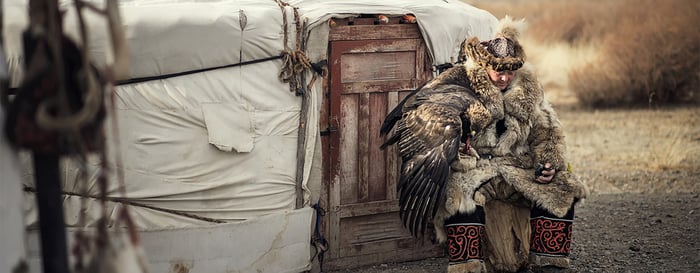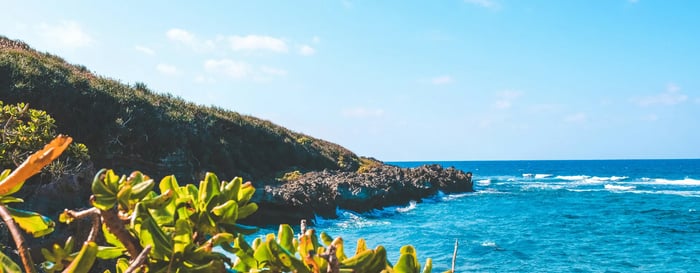STAYING IN INDIA'S BIJOUX PALACES
My trip starts on the port of Fort Kochi, the first European settlement in India, colonised in 1300, is a bouillabaisse of Portuguese, Chinese, Arabic, English and Dutch influences.
At the Brunton Boatyard, I am immersed in Kochi’s maritime history. The ‘heritage hotel’ with its soaring, hull-like teak ceiling and white washed walls sits among the port’s old spice trading houses, on the site of a former shipyard. The British Raj era lounge boasts terracotta floors, vintage photographs and cloth punkah fans, suspended from the ceiling, which evoke as their Hindi name suggests, the flapping wings of a bird.

From my room, the water views are mesmerising. At sunset, the golden silhouettes of the cantilevered Chinese fishing nets shimmer along the foreshore. The flooding of this Arabian Sea port in the 13th century, to form a massive harbour, paved the way for Kochi’s colourful trading past.
That history is also encapsulated in the Old Harbour Hotel, another typical Kochi mix of colonial styles, tucked down a narrow road near the waterfront strip, Vasco da Gama Square. The heritage-listed 300 year-old building of white colonnades and exquisitely decorated tiles was the town's first hotel, later owned by an English tea-broker, says its Keralite owner and art collector, Edgar Pinto, who oversaw its restoration.
Around 1853, the Kingdom of Cochin became a princely state, with a local ruler answering to the British Empire through until 1949. Like the 18th-century Raja boating to his Kerala backwaters residence, Chittoor Kottaram, I now trip a few kilometres east. I barely have time to duck under the ancient stone gateway of his white stone and teak palace and onto a candlelit pathway.
Befitting to a queen, I have these royal quarters all to myself, as well as a butler and cook. “This is a one-key hotel,” says Milton, the butler. “We want people to enjoy it in a princely manner.” By night the palace’s beauty is bewitching; its Portuguese-style antique balustrades lit up and stained glass decorations of elephants and lotus Goddesses shimmering over the lawns.

From the porch I can see through to the lights dancing on the Kerala backwaters. The vast network of rivers, canals and lakes spreads for hundreds of kilometers along Kerala’s Malabar Coast. Next, two men bearing bright tiger-like stripes and spots chant, beat drums and wave their heads and bellies about with a lulling rhythm known in Southern India as Carnatic music.
Later like all good royals, I stroll out of the ancient walls of my palace and mix with the people. Flotillas of colorful costumes and mystical tunes greet me at the 800-year-old Hindu temple where an annual festival is underway. “The prince’s ancestors built his home so they could be close to the weeklong Sri Krishna festivities, rather than boat back to the city palace every night,” Milton says.
Back in my breezy upstairs quarters, WELCOME THAMPURAN & THAMPURATY is scrawled in shiny red ‘lucky seeds’ (from the red sandalwood tree), over the carpets. Despite being a palace, there are no marble-slathered bathrooms or gold taps here – no Jacuzzi, TV’s or iPod docks either.
Stressed-out entrepreneurs are among those lured here says Milton for a digital detox, of Ayurvedic treatments and food. My meal is a veritable banquet of curried okra and lentils, steamed Vattayappam rice cake and melt-in-the-mouth coconut pudding, karikku, all served up in small brass pots.

My next stately stay takes me some 400km east to neighbouring Tamil Nadu, almost from coast to coast. The foyer of Visalam, a palatial mansion in the village of Kanadukathan, is breathtaking with its lofty carved ceiling and patterned Athangudi-tiled floors, manufactured locally in myriad colours.
The petite century-old palace, built by a wealthy noble for his daughter, glows like a firefly at night inside and out. Typical of the Chettinad region, many such residences emerged during a trading boom of the 1880s to 1940s. Chettinad artisans including tile-makers, weavers, carpenters and stone workers helped restore Visalam - its carved doorways, marble platforms and teak furnishings - all of which transport you to another era along with the essentially magical night airs of Kanadukathan. There is a tactile pleasure in handling the handmade Tulsi soaps, writing paper and fabrics. The hotel has a strict sourcing limit of 50 miles, and there is no plastic in sight; only a bottle of purified rainwater.
The next days’ activities take me to the market; to near-1000 year old temples with brightly-tiered Gopuram towers bearing elephants and Hindu god statues; and to a home-based cooperative where a group women are frying murukkus in coconut oil under a thatched-roof patio. From the Tamil word for twisted, the spiral rice and dal flour snacks are spiced up with piment and garlic.
My onward journey takes me over 2,000 kilometers, through a kaleidoscope of cultures and scenery. From the breezy Bay of Bengal to the glaring reds of Rajasthan. After scaling the pathway to Jodphur’s 1459 hilltop bastion, the Mehrangarh Fort, I see similar pinky-red hued walls and parapets at the Ratan Vilas.

Laid out around a large interior courtyard, the princely 1910 abode is decked with period furniture, hand block printed textiles and archival photographs. the home is like a museum piece of Maharaj history. Built by Maharaj Ratan Singh, a descendant of the Rajput princes who ruled for centuries over Jodphur’s former Marwar kingdom, his great grandson Brijraj together with wife Namrata run the enchanting establishment. By night, over an alfresco dinner, lights illuminate the vast porch of the crenulated building and cast a dreamy glaze over the swimming pool and lawns.
Finally it is a long, hot and adventurous journey by local bus and jeep, that takes me to the end of the road, and the end of my Indian journey, at a remote, Mughal history-infused valley east of Jaipur. Though not an historic palace in itself, the allure and setting of the Amanbagh resort are. Built as a modern-day Mughal palace, from golden sandstone and local pink marble engraved with jali lattice work, when I dip into the swimming pool, I am also dipping into the rural landscapes and captivating views of the surrounding Aravalli hills.
You don’t have to go out of this sanctuary to feel the history. Yet venturing into the ancient empire landscapes, we encounter more wonders ... ruins, temples and hillside citadels including the 17th-century Bhangarh fort. Then the rare chance at the Sariska National Park of seeing tigers, protected, and in their native habitat.
Golden Eagles & Western Nomads
- Stay with a Kazakh eagle hunter and his family
- Discover the importance of golden eagles to the Kazakhs, and learn about training these birds
- Witness the unique, two-day Sagsai Golden Eagle Festival
- Explore the Altai Mountains on horseback and visit ancient sites
- Experience local cuisine and traditions such as Mongolian throat singing
Tea Plantations and Coastal Hideaways
Sri Lanka's Hill Country Sri Lanka's Southern Beaches Sri Lanka Indian Subcontinent
- Experience one of the loveliest train journeys in the world, from Colombo up to the Hill Country
- Explore the countryside surrounding Ceylon Tea Trails
- Spot blue whales and dolphins from the coastal town of Mirissa
- Wander through the streets of Galle Fort, shopping for local artwork
- Go on a day trip to Yala National Park to look for Sri Lankan leopard
Ultimate Okinawa
- Relax on the white-sand beaches of Taketomi and the Ishigaki Islands
- Visit the UNESCO World Heritage site of Shuri Castle
- Learn about the history of Ryukyu Island
- Enjoy a sunset cruise on the East China Sea
- Snorkel above some of Japan’s most beautiful coral reefs








